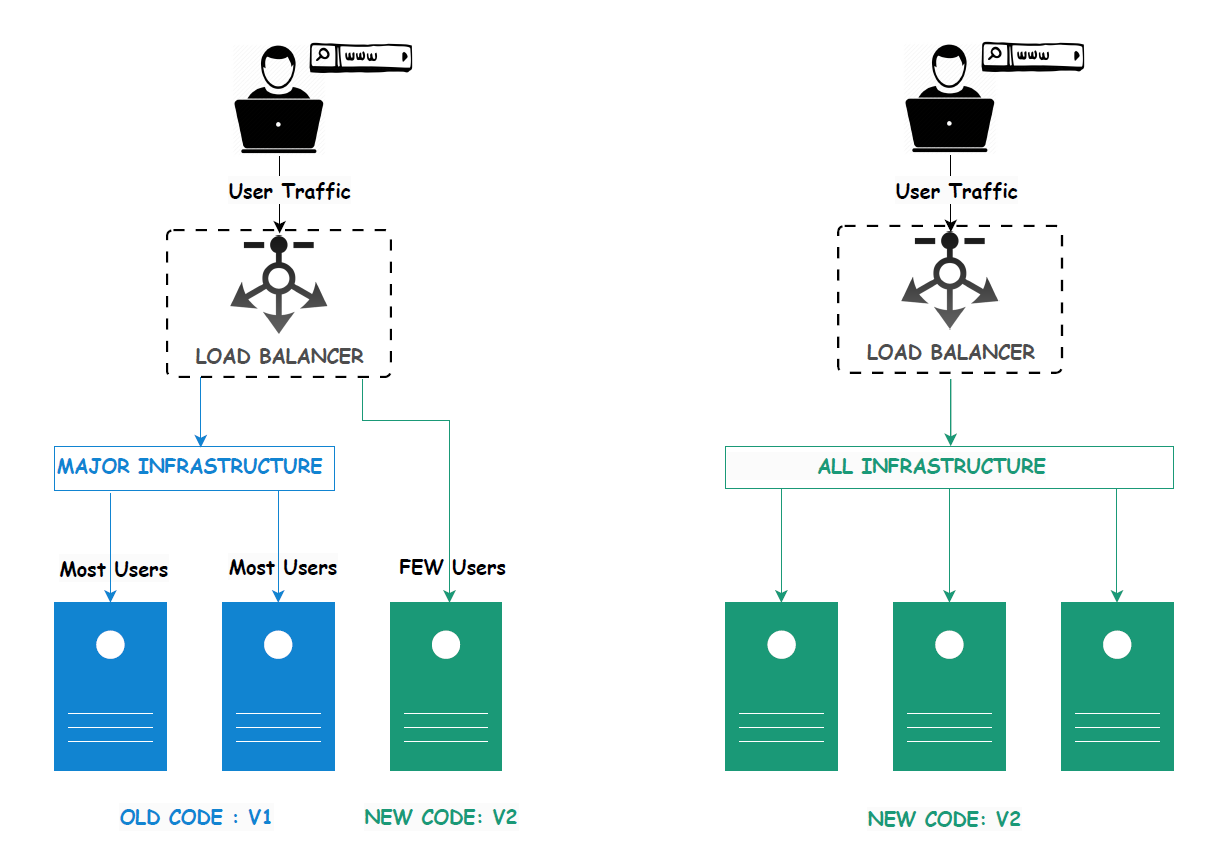Canary Deployment¶
Canary deployment is a deployment strategy that involves gradually rolling out a new version or update to a subset of users or servers, allowing for testing and monitoring before fully deploying to the entire infrastructure. In canary mode, the deployment process follows these steps:

-
A small portion of the user traffic or a subset of servers, typically referred to as the "canary group," is selected to receive the new version or update.
-
The new version is deployed to the canary group while the rest of the infrastructure, including the major infrastructure and all other components, continues to run the current stable version.
-
The canary group starts receiving a fraction of the user traffic, and their behavior and performance are closely monitored and analyzed.
-
If the new version performs well without any issues or negative impact on the canary group, the deployment is gradually expanded to include a larger portion of the infrastructure, including the major infrastructure and ultimately all components.
-
Monitoring and metrics are continuously analyzed during the rollout to identify any anomalies, errors, or performance degradation across the entire infrastructure.
-
If issues are detected, the rollout can be quickly halted or rolled back, preventing widespread impact and minimizing disruption to the major infrastructure and all other components.
-
Once the new version has been successfully rolled out to the entire infrastructure, encompassing the major infrastructure and all components, and is proven to be stable, the canary deployment is completed.
The key benefits of canary deployments, including major infrastructure and all infrastructure, are:¶
-
Risk mitigation: By initially deploying the new version to a small subset of users or servers, any issues or bugs can be detected early, reducing the risk of a widespread negative impact on the major infrastructure and all components.
-
Controlled rollout: Canary deployments allow for controlled and gradual rollouts, providing an opportunity to monitor the performance, stability, and user experience of the new version across the major infrastructure and all other components before a full deployment.
-
Continuous monitoring: During the canary phase, metrics and monitoring systems help identify any abnormalities, errors, or performance issues across the major infrastructure and all components, enabling timely actions such as rollback or further optimization.
-
Faster feedback loop: Canary deployments facilitate faster feedback and validation of the new version, allowing teams to make necessary adjustments or improvements based on real-world usage and feedback across the major infrastructure and all components.
Conclusion
Overall, canary deployments provide a controlled and incremental approach to deploying updates across the major infrastructure and all components, enabling teams to validate the new version in a controlled environment and ensure a smooth transition to the updated system.